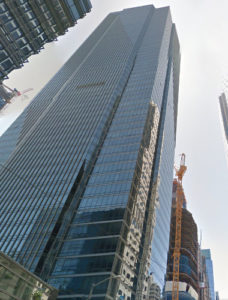The New Jersey Supreme Court recently reversed its position on coverage for construction defects, affirming the Appellate Division’s decision that consequential damages caused by a subcontractor’s faulty workmanship constituted “property damage” caused by an “occurrence” under the plain language of the developer’s Commercial General Liability (CGL) policy.
The ALS Group
Recent Posts
Is Faulty Workmanship an Insurable Event? The New Jersey Supreme Court Says “Yes.”
Topics: Insurance
Construction Defects … Leave You with That Sinking Feeling
A case in point is the super sleek and very expensive Millennium Towers building in San Francisco. According to reports from independent consultants, the 58 story building has sunk about 16 inches and tilts about two inches to the Northwest. Settling is a natural process in any construction project and architects and engineers build that into their model; however, 16 inches since 2008 is a cause for concern. And, the sinking isn’t over. According to the August 9th article in Curbed San Francisco, the building is predicted to drop an additional eight to 15 inches into the ground.
Topics: Construction and Development
Have you protected your worksite from Rattata yet? How about Pidgey or Staryu?
Who? They’re just a few characters from Pokémon Go, the augmented reality game craze that’s got people showing up at PokéStops in all sorts of random places, hoping to track down Pokémon characters on their mobile devices. With more than 30 million users (more than 20 million registered users in the US alone), the game takes players out into real world locations, including retail stores, office buildings, train stations and even construction sites.
Topics: Construction and Development
Is Your Mobile Device Putting Your Company at Risk?
Are you addicted to your mobile device? Most of us are. Everything is a tap or swipe away. You can check account balances, pay bills, order from online stores, deal with business email and documents, etc… Essentially, mobile devices allow you to manage your life untethered. Hackers realize that too and are targeting mobile devices more than ever.
Topics: Cyber Risk
A critical step of any contractual agreement between property owners and managers and their vendors (including contractors) is a careful review of the provisions affecting insurance and legal indemnification. The difference between a thoughtfully negotiated contract and one that is “off the shelf” or, even worse, none at all may be the difference between accepting liability where never intended.
Topics: Insurance
One of the most significant cyber threats to any company’s security is the Rogue Employee. Who is this person? Someone who has been entrusted with access to the system(s); (i.e. databases, customer records, HR records, confidential email, etc.) and who chooses to hurt the company and fellow employees by intentionally performing a wrongful act or providing another with the ability to do so.
Topics: Cyber Risk
It was not a very happy new year for Chipotle having been slapped with a shareholder class action lawsuit for “having known the fast food chain had inadequate safety practices but lied and omitted material facts in reports to stockholders".
Topics: General Coverage
Hurricanes, Tropical Storms and Insurance – Oh My
As the world is ever changing, so are the way insurers interpret the natural disasters and how they will respond to cover these terrible events. Over the years, the U.S. has seen an increase in earthquakes, tornadoes, hurricanes, blizzards and more. The insurance industry now has created a stricter view of how they will cover these events. In particular, as we have seen with Hurricane Katrina and Hurricane Sandy, the insurance industry has developed a new terminology and deductible related, specifically, to “named storm/named windstorm.”
Topics: Seasonal & Weather
The Battle Between "Blanket" Additional Insured Endorsement and the Underlying Contract
The construction and real estate industry continue to grow and so do the risk exposures from a fundamental inconsistency between a contract’s commercial intent and insurance policy language. “Additional Insured” is a very common requirement in a real estate or construction contract and many times there is a distinct lack of specificity with what is, actually, being required and why the provision is appropriate. Additional Insured status provides vicarious liability coverage to an outside entity, usually, an owner or general contractor, under the subcontractor’s policy. It is often a requirement in construction contracts, and it can be the source of insurance disputes if not handled correctly given the changes in the regulatory framework of today’s insurance policies.
Topics: Construction and Development
One of the areas often overlooked, but vital to an insured, is the defense costs coverage a liability policy provides. As some insureds may be aware, there are two types of defense costs payments, those policies that pay “in addition” to the limits and those whose payments are “within” the policy limits.
Topics: Construction and Development




